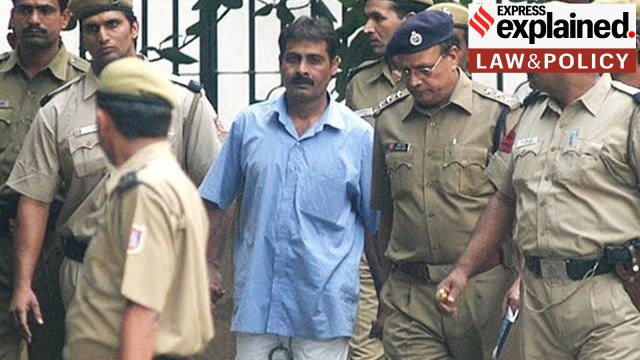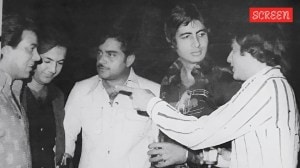Red Fort case: What are the standards for awarding death sentence, the President’s ‘mercy’ power
The President’s decision, made on May 27, came after Arif failed to obtain relief from the Delhi High Court and Supreme Court in his appeals against a trial court order of October 2005. He can challenge the President’s decision and prolong the proceedings further.
 In November 2022, the Supreme Court rejected Arif’s review petition. (Archive)
In November 2022, the Supreme Court rejected Arif’s review petition. (Archive)President Droupadi Murmu has rejected a mercy petition filed by Pakistani national Mohammed Arif who was sentenced to death for the December 22, 2000 terrorist attack at the Red Fort in which three people including two Army jawans were killed.
The President’s decision, made on May 27, came after Arif failed to obtain relief from the Delhi High Court and Supreme Court in his appeals against a trial court order of October 2005. He can challenge the President’s decision and prolong the proceedings further.
What standard do courts apply in death sentence cases?
In 1980, the Supreme Court (Bachan Singh v. State of Punjab) upheld the constitutionality of the death penalty, but established important guardrails. “Judges”, the court said, “should never be bloodthirsty”, and the death penalty should not be awarded “save in the rarest of rare cases when the alternative option is unquestionably foreclosed”, and all possible mitigating circumstances have been considered.
The court has reaffirmed the “rarest of rare” standard in several decisions since then.
The Report of the 262nd Law Commission published in 2015 recommended the “absolute abolition” of the death penalty “for all crimes other than terrorism related offences and waging war”.
On the President’s power to “grant pardons, etc., and to suspend, remit or commute sentences in certain cases” (Article 72 of the Constitution), the Law Commission Report said these ‘mercy powers’ provided additional protection against possible miscarriage of justice and, “therefore, cases found unfit for mercy merit capital punishment.”
What happened during the attack at the Red Fort? How was Arif arrested?
Late evening on December 22, 2000, two Lashkar-e-Tayyeba terrorists sneaked into the Red Fort and opened fire, killing two jawans of the Army’s Rajputana Rifles regiment and a civilian security guard before escaping.
Investigators made a breakthrough after assault rifles were found abandoned outside the Red Fort, and four detonators with tags which said in Urdu: “Khabardar. Grenade firing ke liye taiyyar hai. Safety pin sirf hamle ke waqt nikalein,” according to reporting by The Indian Express.
A polythene bag containing cash and a slip with a mobile phone number on it was also found, which led Delhi Police to Arif alias Ashfaq. He was arrested on December 26, along with his wife Rehmana Yusuf Farooqi.
Arif directed police to one Abu Shyamal alias Faizal, who was killed in an encounter at his hideout in Batla House, Okhla. Another alleged militant identified as Abu Sufian was killed in an encounter in Srinagar.
Delhi Police filed a chargesheet against Arif and 21 others on February 20, 2001, and a supplementary chargesheet on March 25 that year. The trial of 11 accused began on September 11, 2001. Over the next three years, the prosecution examined 235 witnesses, and the trial court reserved judgment on October 14, 2005. On October 31, the court found seven of the accused guilty, and sentenced Arif to death.
How did Arif’s appeals process progress?
In 2007, the Delhi High Court confirmed the trial court’s decision to sentence Arif to death. Arif then appealed to the Supreme Court. On August 10, 2011, a Bench of Justices V S Sirpurkar and T S Thakur rejected the appeal, calling the attack an “undeclared war by some foreign mercenaries”.
Providing a historical overview of Red Fort to highlight its significance as a national monument, the Bench stated that “even without any reference to any other case law”, the case satisfies the standard of the “rarest of rare”.
Arif continued to file petitions at the Supreme Court against the death sentence. The first review petition was rejected in August 2012, and the following curative petition — where the apex court can only interfere if there is an obvious error in its decision — was rejected in January 2014.
That same year, Arif filed another writ petition, arguing that cases arising out of a death sentence should be heard by a Bench of three judges or more, and that his 2012 review petition should be heard afresh. A five-judge Constitution Bench in September 2014 agreed with his arguments, and held that “at least three judicially trained minds need to apply their minds at the final stage of the journey of a convict on death row”.
The case was then placed before a three-judge Bench led by former Chief Justice of India U U Lalit. On November 3, 2022, nearly 22 years after the attack, the Bench rejected Arif’s plea, finding that “there was a direct attack on the unity, integrity and sovereignty of India.”
The court set aside findings based on call data records, but held that “other circumstances on record do clearly spell out and prove beyond any doubt the involvement of the review petitioner in the crime…”.
President Murmu received Arif’s mercy petition on May 15, 2024.
What can happen here onward?
Arif has the option of challenging the President’s rejection of his mercy petition.
At a procedural level, the apex court has held that the President’s power must be exercised based on the aid and advice of the Council of Ministers, and can be challenged on multiple grounds — including that relevant material was not considered, the power was exercised based on political considerations, or that there was no application of mind.
The top court has also commuted the death sentence in cases of inordinate delay in deciding mercy petitions, such as in the case of Shatrugan Chauhan v. State of U.P. (2014).
The court also commuted the sentence of one Gurmeet Singh after he spent 27 years in custody (and 21 years on death row). The court found that there was an inordinate delay in deciding his mercy petition, which was disposed of in March 2013 more than seven years after the Supreme Court first upheld the death sentence.
In April 2023, the Supreme Court declined to interfere with an order of the Bombay High Court, which commuted the death sentence awarded to a woman and her sister on grounds of inordinate delay in deciding the mercy petitions of the accused.
Arif has spent over 23 years in custody, and close to 19 years under a death sentence.
- 01
- 02
- 03
- 04
- 05





































